Milwaukee M18 REDLITHIUM FORGE 48-11-1861 Bruksanvisning
Läs gratis den bruksanvisning för Milwaukee M18 REDLITHIUM FORGE 48-11-1861 (2 sidor) i kategorin batteri. Guiden har ansetts hjälpsam av 39 personer och har ett genomsnittsbetyg på 4.9 stjärnor baserat på 20 recensioner. Har du en fråga om Milwaukee M18 REDLITHIUM FORGE 48-11-1861 eller vill du ställa frågor till andra användare av produkten? Ställ en fråga
Sida 1/2
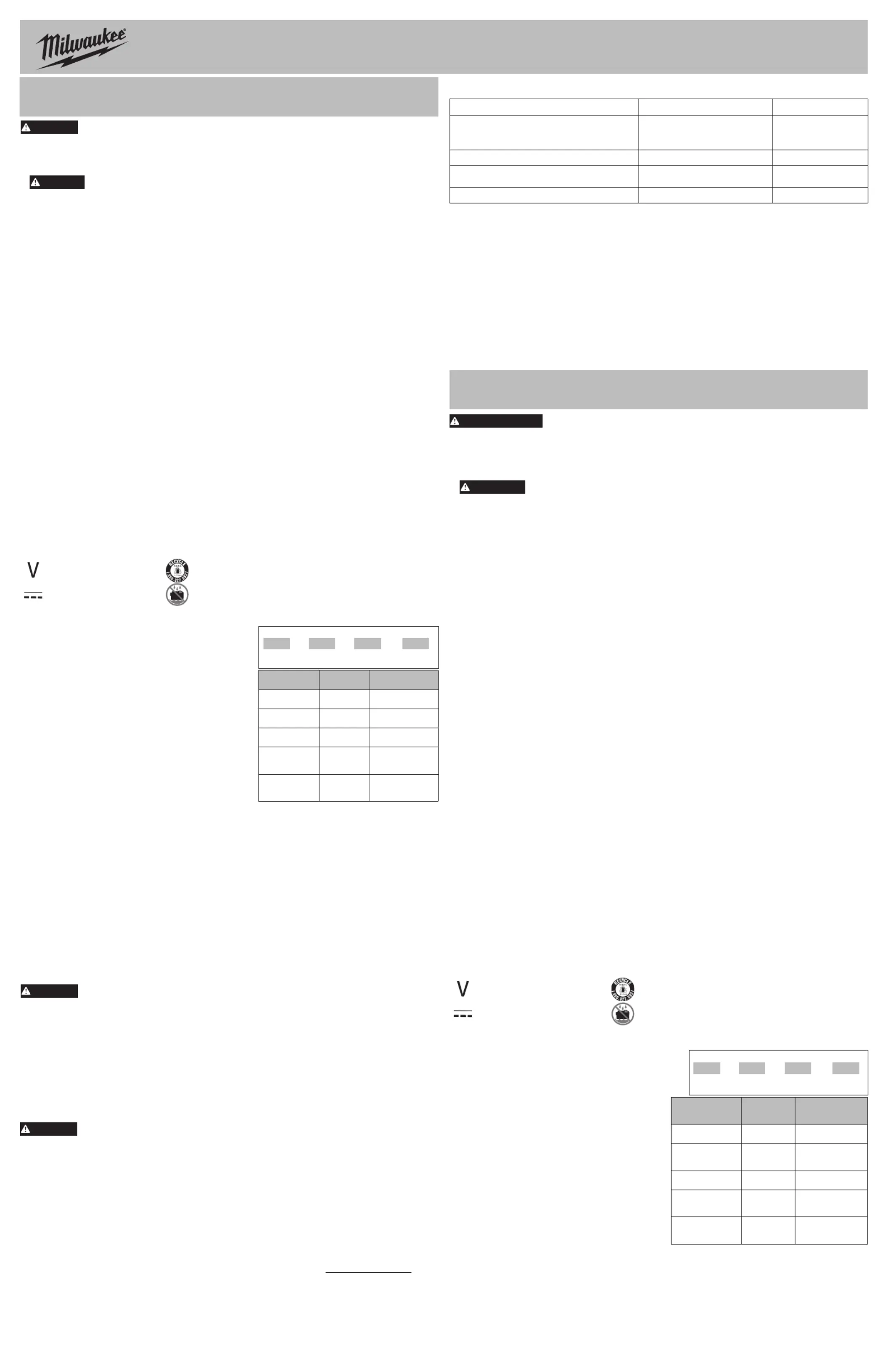
New batteries must be charged before rst use.
Les batteries neuves doivent être chargées avant leur utilisation initiale.
Las baterías nuevas se deben cargar antes de usarlas por primera vez.
IMPORTANT SAFETY INSTRUCTIONS
- SAVE THESE INSTRUCTIONS -
WARNING
READ AND UNDERSTAND ALL INSTRUCTIONS. Failure to follow all instruc-
tions listed below, may result in electric shock, re and/or serious personal injury.
1. SAVE THESE INSTRUCTIONS - This manual contains important safety and operating instructions for
MILWAUKEE Li-Ion batteries.
2. Before using the battery, read this operator's manual, the charger and tool's operator's manuals, and
all labels on the battery, charger and tool.
3.
CAUTION
Use MILWAUKEE Li-Ion batteries only on recommended MILWAUKEE Li-Ion products
(i.e., M18™ batteries with M18™ charger/tools, M12™ batteries with M12™ charger/tools).
Do not use counterfeit, aftermarket, or "knocko" batteries or chargers. Other battery types could
explode. Do not wire a battery to a power supply plug or car cigarette lighter.
4. Keep batteries out of the reach of children.
5. Avoid dangerous environments. Do not expose to or charge in rain, moisture, snow, damp, or wet locations.
Do not use battery or charger in the presence of explosive atmospheres (gaseous fumes, dust, or ammable
materials). Sparks may be generated when inserting or removing battery, possibly causing re.
6. Only charge in a well ventilated area and within the Recommended Ambient Charging Temperature
range. Do not block vents; keep them clear for proper ventilation. Do not allow smoking or open ames near
a charging battery. Vented gases may explode.
7. Do not burn, incinerate, or expose batteries to re or excessive temperatures above 265°F (130°C).
Batteries may explode. Toxic fumes and materials are created when batteries are burned.
8. Do not crush, drop, shred, modify, or damage battery. Always securely contain batteries during transport.
Do not use a battery that has received a sharp blow, been dropped, run over, or damaged in any way (e.g., pierced
with a nail, hit with a hammer, stepped on, in a vehicle accident). Do not use or charge batteries that appear dam-
aged or swollen, or are not functioning properly. Damaged or modied batteries may exhibit unpredictable behavior.
9. Do not disassemble or attempt to repair batteries. No internal serviceable parts. Take batteries that have been
damaged, broken, or need repair to a MILWAUKEE service facility to ensure the safety of the product is maintained.
10. Battery chemicals cause serious burns. Never allow contact with skin, eyes, or mouth. If a damaged battery
leaks battery chemicals, use rubber or neoprene gloves to dispose of it. If skin is exposed to battery uids,
wash with soap and water and rinse with vinegar. If eyes are exposed to battery chemicals, immediately ush
with water for 20 minutes and seek medical attention.
11. Do not short circuit. A short-circuited battery pack may cause re, personal injury, and product damage. A
battery pack will short circuit if a metal object makes a connection between the positive and negative contacts
on the battery pack. Do not place a battery pack near anything that may cause a short circuit (e.g., coins,
keys, nails, or small metal objects in a pocket, toolbox, or drawer).
12. Do not allow uids to ow into battery pack. Corrosive or conductive uids, such as seawater, certain
industrial chemicals, and bleach or bleach-containing products, etc., can cause a short circuit. Do not use
battery packs that have been exposed to these types of uids.
13. Battery packs marked as Resistant are suitable for environments where incidental contact or exposure to
oils, greases, and solvents can occur. These packs are not resistant to acids or other corrosive chemicals.
Never immerse or allow uids to penetrate the battery pack.
14. Always use a side handle when using a HIGH OUTPUT or HIGH DEMAND battery pack 6.0 Ah or above;
the output torque of some tools may increase. If your drill/driver did not come with a side handle, visit the
MILWAUKEE TOOL website for the appropriate accessory handle.
15. Store the battery pack and charger in a cool, dry place. Do not store where temperatures may exceed 120°F
(50°C) such as in direct sunlight, a vehicle, or metal building during the summer.
16. Always ship Li-Ion batteries in accordance with the current regulations governing the chosen mode of
transport (e.g. ground, air, sea). When in doubt, contact MILWAUKEE, the carrier or other trained Danger-
ous Goods professional to determine applicable regulations.
17. Maintain labels and nameplates. These carry important information. If unreadable or missing, contact a
MILWAUKEE service facility for a replacement.
Symbology
Volts
Direct Current
Properly Recycle Batteries
Do not allow battery to contact corrosive or conductive uid
Charging Temperature
Recommended Ambient Charging Temperature
40°F to 104°F (5°C to 40°C) ..................................................
Fuel Gauge
Compared to NiCd battery pack types, MILWAUKEE Li-Ion battery
Approximate Run Time Remaining:
10-32% 33-54% 55-77% 78-100%
Less than 10% of charge if bottom light is ashing
packs deliver fade-free power for their entire run time. The tool
will not experience a slow, gradual loss of power during use.
Use the fuel gauge to determine the battery pack's remaining
run time. Press the fuel gauge button to display the lights. The fuel
Fuel Gauge
Lights Diagnosis Solution
Lights 1 - 4 Solid Remaining
run time
Continue working
1 Light,
ashing slowly
Less than 10%
run time left
Prepare to charge
pack
1 Light,
ashing quickly
End of
discharge
Charge pack
Lights 1-4,
ashing quickly
Current draw
too high
Release trigger
and restart, reduce
pressure
Lights 1&3 /
2&4, ashing
alternatingly
Battery
temperature
too high
Release trigger and
allow battery to cool
gauge will light up for 2-3 seconds.
To signal the end of discharge, 1 light on the fuel gauge will
ash quickly for 2-3 seconds and the tool will not run. Charge
the battery pack.
If the fuel gauge doesn't appear to be working, place the battery
pack on the charger and charge as needed.
Immediately after using the battery pack, the fuel gauge may
display a lower charge than it will if checked a few minutes later.
The battery cells "recover" some of their charge after resting.
Battery Pack Protection
To protect itself from damage and extend its life, the battery
pack’s intelligent circuit monitors current draw and temperature.
In extremely high torque, binding, stalling, and short circuit situ-
ations, the battery pack will turn OFF the tool if the current draw
becomes too high. All the fuel gauge lights will ash. Release the trigger and restart.
Under extreme circumstances, the internal temperature of the battery could become too high. If this happens, the
fuel gauge lights will ash in an alternating pattern and the product will not run. Allow the battery to cool down.
Cold Weather Operation
MILWAUKEE Li-Ion battery packs are designed to operate in temperatures below freezing. When the battery
pack is too cold, it may need to warm up before normal use. Put the battery on a product and use the product
in a light application.
It may “buzz” for a short time until it warms up. When the buzzing stops, use the tool normally.
Transport
The regulations pertaining to the transport of Li-Ion batteries are aected by whether the battery is transported
in a personal vehicle or oered for shipment via a commercial carrier. Always ship Li-Ion batteries in accordance
with the current regulations governing the chosen mode of transport (e.g. ground, air, sea). When in doubt, contact
MILWAUKEE, the carrier or other trained Dangerous Goods professional to determine applicable regulations.
The personal transport of Li-Ion battery packs is allowed when done in accordance with these warnings and
instructions. When shipping Li-Ion batteries with a commercial carrier, they are shipped under classication UN
3480 (battery only) or UN 3481 (batteries contained in or packed with equipment). The proper packaging, labeling,
marking, and documentation requirements are generally dependent upon whether the particular batteries are
rated greater than or less than 100 Wh. Often, Li-Ion batteries rated 100 Wh or less are “excepted” from certain
shipping regulations. In the U.S., products shipped via ground transport may be “excepted” from certain hazard-
ous material shipping regulations if they are under 300Wh.
WARNING
To reduce the risk of injury or explosion, never burn or incinerate a battery pack even
if it is damaged, dead, or completely discharged. When burned, toxic fumes and ma-
terials are created.
Disposing of MILWAUKEE Li-Ion Battery Packs
MILWAUKEE Li-Ion battery packs are more environmentally friendly than some other types of battery packs (e.g.,
nickel-cadmium). Always dispose of battery packs according to federal, state and local regulations. Contact a
local recycling agency for recycling locations.
Even discharged battery packs contain some energy. Before disposing, use electrical tape to cover the terminals
to prevent the battery pack from shorting, which could cause a re or explosion.
RBRC Battery Recycling Seals
The RBRC™ Battery Recycling Seals (see the Symbology section) on battery packs indicates that MILWAUKEE
has arranged for recycling with the Rechargeable Battery Recycling Corporation (RBRC). At the end of its useful
life, return the battery pack to a MILWAUKEE Branch Oce/Service Center or a participating retailer. For more
information, visit the RBRC web site at www.rbrc.org.
Maintenance
WARNING
To reduce the risk of re, personal injury, and product damage due to a short circuit,
never immerse a tool, battery pack or charger in uid or allow a uid to ow inside
them. Corrosive or conductive uids, such as seawater, certain industrial chemicals, and bleach or
bleach containing products, etc., can cause a short circuit.
Always unplug the charger and remove the battery from the charger before performing any main-
tenance. Never disassemble the battery or charger. Contact a MILWAUKEE service facility for ALL
repairs.
Do not expose battery packs, chargers or tools to uids, water, or rain, or allow them to get wet. This could dam-
age the tool, charger, and/or battery pack. Clean out dust and debris from tool, charger and battery vents and
electrical contacts by vacuuming or brushing. Clean housings with a damp, soapy cloth, keeping away from all
electrical contacts. Certain cleaners and solvents, such as gasoline, turpentine, lacquer thinner, paint thinner,
bleach, chlorinated cleaning solvents, ammonia and household detergents containing ammonia, are harmful to
plastics and other insulated parts; plastic casings will become brittle and crack. Never use ammable or combus-
tible solvents around batteries, charger, or tools.
Storage
As a general practice, it is best to unplug chargers and remove battery packs when not in use, however, no dam-
age to the battery pack will occur. Store at room temperature away from moisture. Store batteries upright. Do not
store in damp locations where corrosion of terminals may occur. Storing in high temperatures (over 120°F) for long
periods can result in permanent capacity loss for any battery. Charge before use after storing for long periods.
Repairs
No serviceable parts.
Limited Warranty
Every MILWAUKEE Battery Pack (sold with cordless product and/or as a replacement battery pack) is warranted to the original purchaser from an author-
ized MILWAUKEE distributor only to be free from defects in material and workmanship. Subject to certain exceptions, MILWAUKEE will repair or replace a
battery pack which, after examination, is determined by MILWAUKEE to be defective in material or workmanship for the stated warranty period from date
of purchase. Return of the battery pack to a MILWAUKEE factory Service Center location or MILWAUKEE Authorized Service Station, freight prepaid and
insured, is required. For the proper shipping procedure of battery packs, contact 1.800.SAWDUST (1.800.729.3878), or go to www.milwaukeetool.com.
LI-ION BATTERY PACKS
BLOC DE PILES AU LI-ION
PAQUETE DE BATERÍA DE IONES DE LITIO
A copy of the proof of purchase should be included with the return product. This warranty does not apply to damage that MILWAUKEE determines to
be from repairs made or attempted by anyone other than MILWAUKEE authorized personnel, misuse, alterations, abuse, normal wear and tear, lack of
maintenance, or accidents.
Battery Pack Cat. No. Chemistry
Warranty Period
(from date of purchase)
48-11-1812, 48-11-1813,
48-11-1828 (Serial number prex "B41E" and later), 48-11-1840,
48-11-1850, 48-11-1850R, 48-11-1860, 48-11-1861, 48-11-1865,
48-11-1880, 48-11-1881, 48-11-1890, 48-11-2402, 48-11-2440,
48-11-2450, 48-11-2460, 48-11-2830 (Serial number prex "C71")
LITHIUM-ION Three (3) Years
48-11-0490, 48-11-1815, 48-11-1820, 48-11-1835, 48-11-2001,
48-11-2330, 48-11-2401, 48-11-2420, 48-11-2425, 48-11-2430
LITHIUM-ION Two (2) Years
48-11-1828 (Serial number prex "B41D" and earlier),
48-11-1830 (Serial number prex "A95"),
48-11-2830 (Serial number prex "A71")
LITHIUM-ION
Two (2) Years - plus,
Three (3) Years
Pro-Rata (prorated)*
48-11-0100, 48-11-1024, 48-11-1830 (Serial number prex "E95"),
48-11-1970, 48-11-2230
Nickel-Cadmium (Ni-Cd),
Nickel-Metal-Hydride (Ni-MH), LITHIUM-ION
One (1) Year
*The warranty period for MILWAUKEE M18™ 48-11-1828 (with the serial number prex "B41D" and earlier), V18™ 48-11-1830 (with the serial number
prex "A95"), and V28™ 48-11-2830 (with the serial number prex "A71") is ve (5) years / 2000 charges from the date of purchase, whichever rst
occurs. The rst 1000 charges or 2 years of the warranty, whichever rst occurs, are covered through free replacement of the defective battery. This
means that for the earlier of the rst 1000 charges or two (2) years from the date of purchase/rst charge, a replacement battery will be provided to the
customer for any defective battery free of charge. Thereafter, the remaining charges up to a total of 2000 or the remainder of the ve (5) year period
from the date of purchase, whichever rst occurs, will be covered on a pro rata basis. This means that every customer gets an additional 1000 charges
or three (3) years of pro rata warranty on the these battery packs, depending upon the amount of use. MILWAUKEE M18™ 48-11-1828 (with the serial
number prex "B41E" and later), V18™ 48-11-1830 (with the serial number prex "E95"), and M28™ 48-11-2830 (with the serial number prex "C71")
have dierent warranty periods, as listed.
Warranty Registration is not necessary to obtain the applicable warranty on a MILWAUKEE battery pack. The manufacturing date of the product will be
used to determine the warranty period if no proof of purchase is provided at the time warranty service is requested.
ACCEPTANCE OF THE EXCLUSIVE REPAIR AND REPLACEMENT REMEDIES DESCRIBED HEREIN IS A CONDITION OF THE CONTRACT
FOR THE PURCHASE OF EVERY MILWAUKEE PRODUCT. IF YOU DO NOT AGREE TO THIS CONDITION, YOU SHOULD NOT PURCHASE THE
PRODUCT. IN NO EVENT SHALL MILWAUKEE BE LIABLE FOR ANY INCIDENTAL, SPECIAL, CONSEQUENTIAL, OR PUNITIVE DAMAGES, OR
FOR ANY COSTS, ATTORNEY FEES, EXPENSES, LOSSES OR DELAYS ALLEGED TO BE AS A CONSEQUENCE OF ANY DAMAGE TO, FAILURE
OF, OR DEFECT IN ANY PRODUCT INCLUDING, BUT NOT LIMITED TO, ANY CLAIMS FOR LOSS OF PROFITS. SOME STATES DO NOT ALLOW
THE EXCLUSION OR LIMITATION OF INCIDENTAL OR CONSEQUENTIAL DAMAGES, SO THE ABOVE LIMITATION OR EXCLUSION MAY NOT
APPLY TO YOU. THIS WARRANTY IS EXCLUSIVE AND IN LIEU OF ALL OTHER EXPRESS WARRANTIES, WRITTEN OR ORAL. TO THE EXTENT
PERMITTED BY LAW, MILWAUKEE DISCLAIMS ANY IMPLIED WARRANTIES, INCLUDING WITHOUT LIMITATION ANY IMPLIED WARRANTY OF
MERCHANTABILITY OR FITNESS FOR A PARTICULAR USE OR PURPOSE; TO THE EXTENT SUCH DISCLAIMER IS NOT PERMITTED BY LAW,
SUCH IMPLIED WARRANTIES ARE LIMITED TO THE DURATION OF THE APPLICABLE EXPRESS WARRANTY AS DESCRIBED ABOVE. SOME
STATES DO NOT ALLOW LIMITATIONS ON HOW LONG AN IMPLIED WARRANTY LASTS, SO THE ABOVE LIMITATION MAY NOT APPLY TO YOU,
THIS WARRANTY GIVES YOU SPECIFIC LEGAL RIGHTS, AND YOU MAY ALSO HAVE OTHER RIGHTS WHICH VARY FROM STATE TO STATE.
This warranty applies to product sold in the U.S.A. and Canada only.
Please consult the ‘Service Center Search’ in the Parts & Service section of MILWAUKEE’s website www.milwaukeetool.com or call 1.800.SAWDUST
(1.800.729.3878) to locate your nearest service facility for warranty and non-warranty service on a MILWAUKEE Battery Pack.
RÈGLES GÉNÉRALES DE SÉCURITÉ
- CONSERVER CES INSTRUCTIONS
-
AVERTISSEMENT
LIRE ET COMPRENDRE TOUTES LES INSTRUCTIONS. Le non-re-
spect des instructions ci-après peut entraîner des chocs électriques, des
incendies et / ou des blessures graves.
1. GARDER CES INSTRUCTIONS - Ce manuel comprend des instructions d’opération et de sécurité
importantes pour le piles au lithium-ion de MILWAUKEE.
2. Avant d’utiliser le bloc-piles, veuillez lire la présente feuille d’instructions, le manuel de votre outil et
celui de votre chargeur ainsi que toutes les étiquettes sur le bloc-piles, le chargeur et l’outil.
3.
ATTENTION
Utiliser uniquement les piles au lithium-ion de MILWAUKEE avec les produits au
lithium-ion de MILWAUKEE recommandés (p. ex., piles M18™ avec chargeur/outils
M18™ ™ avec chargeur/outils M12™). Ne pas utiliser des piles ou des chargeurs contrefaits, , piles M12
falsiés ou « truqués ». Autres types de blocs-piles sont susceptibles à exploser. Ne pas relier une pile
à une prise secteur ou à un allume-cigare.
4. Garder les blocs-piles hors de la portée des enfants.
5. Éviter les environnements dangereux. Ne pas exposer ou charger le produit sous la pluie, sous la neige ou
dans des endroits humides ou mouillés. Ne pas utiliser le bloc-piles ou le chargeur aux atmosphères explosives
(où des fumées gazeuses, de la poussière, ou bien des matériaux inammables sont présents). Il est possible
que des étincelles se produisent lors de l’insertion ou l’extraction du bloc-piles, ce qui causera un incendie.
6. Charger uniquement dans une aire bien ventilée et dans la plage de température ambiante de chargement
suggérée. Ne pas obstruer les évents d’aération ; il faut les garder libres pour qu’il y ait une ventilation appropriée. Ne
pas laisser des fumées ou des ammes vives auprès d’un bloc-piles qui se charge. Les gaz ventilés pourront exploser.
7. Ne pas brûler, incinérer ou exposer les blocs-piles au feu ou à des températures excessives qui dépas-
sent 130º C (265º F). Les blocs-piles pourront exploser. Des vapeurs et des matériaux toxiques se produisent
à partir de la brûlure des blocs-piles.
8. Ne pas écraser, laisser tomber, râper, modier ou endommager le bloc-piles. Toujours mettre les blocs-
piles dans un conteneur sûr durant le transport. Ne pas utiliser un bloc-piles qui a subi un choc violent, a
été écrasé ou endommagé d’une manière quelconque (par exemple, s’il a été percé par un clou, frappé par un
marteau ou piétiné durant un accident de voiture). Ne pas utiliser ou charger des blocs-piles s’il semble qu’ils
sont endommagés ou gonés ou qu’ils ne fonctionnent pas bien. Il est possible que les blocs-piles endom-
magés ou modiés puissent avoir un comportement imprévisible..
9. Ne pas désarmer ou tenter de réparer les blocs-piles ou les chargeurs. Ceci ne comporte aucune pièce
réparable. Amener les blocs-piles/les chargeurs endommagés, cassés ou nécessitant des réparations à un
centre de service de MILWAUKEE pour garantir que la sûreté du produit est assurée.
10. Les produits chimiques dans les blocs-piles pourront causer des brûlures graves. Ne jamais laisser les
produits chimiques entrer en contact avec la peau, les yeux ou la bouche. Si jamais des produits chimiques se
coulent d’un bloc-piles endommagé, porter des gants en néoprène ou en caoutchouc pour se débarrasser de
lui. Si la peau est jamais exposée aux uides d’un bloc-piles, la laver à l’eau et au savon et rincer au vinaigre.
Si les yeux sont jamais exposés aux produits chimiques d’un bloc-piles, rincer immédiatement à l’eau pendant
20 minutes et consulter un médecin.
11. Ne pas court-circuiter. Un bloc-piles court-circuité pourra causer un incendie, des blessures corporelles et
endommager le produit. Un bloc-piles court-circuitera si un objet métallique établit une connexion entre les
bornes positive et négative du bloc-piles. Mettre un bloc-piles à l’écart de tout ce qui pourra causer un court-
circuit (tel que les pièces de monnaie, des clés, des clous ou de petits objets métalliques dans une poche,
une boîte à outils ou un tiroir).
12. Ne pas laisser des liquides entrer dans le bloc-piles. Les uides corrosifs et conducteurs, tels que l’eau de mer,
quelques produits chimiques industriels et solutions d’eau de Javel ou d’autres produits ayant de l’hypochlorite,
etc., pourront provoquer des courts-circuits. Ne pas utiliser des blocs-piles qui ont été exposés à ce type de liquides.
13. Les blocs-piles ayant la marque « Résistant » sont idéaux pour les environnements où il est possible qu’il
y ait un contact ou une exposition accidentelle aux huiles, aux graisses et aux solvants. Ces blocs-piles ne
sont résistants ni aux acides ni à d’autres produits chimiques corrosifs. Ne jamais immerger dans des liquides
et ne jamais laisser que des liquides entrent dans le bloc-piles.
14. Toujours utiliser une poignée latérale lors de l’utilisation d’un bloc-piles HIGH OUTPUT ou HIGH
DEMAND de 6,0 Ah ou plus puissant, car le couple de sorti de certains outils pourra augmenter. Si votre
perceuse/tournevis n’a pas une poignée latérale incluse, visiter le site web de MILWAUKEE TOOL pour en
savoir plus sur l’accessoire de la poignée correspondante.
15. Ranger le bloc-piles et le chargeur dans un endroit frais et sec. Ne pas ranger dans des endroits où la
température peut dépasser 50 ºC (120 ºF), par exemple, un endroit exposé directement aux rayons du soleil,
un véhicule ou une construction en métal pendant l’été.
16. Toujours livrer les piles au lithium-ion selon les réglementations actuelles régissant le mode de trans-
port choisi (par exemple, terrestre, aérien, maritime). En cas de doute, veuillez contacter MILWAUKEE,
l’entreprise de transport ou d’autres professionnels qualiés dans le transport de marchandises dangereuses
an de déterminer quelles sont les réglementations correspondantes.
17. Conserver les étiquettes et les plaques signalétiques en bon état. Des informations importantes y gurent. Si
elles sont illisibles ou manquantes, contacter un centre de service de MILWAUKEE pour obtenir un remplacement.
Pictographie
Volts
Courant direct
Recyclage correct des batteries
Ne pas permettre que le bloc-piles soit en contact les
uides corrosifs ou conducteur
Température de chargement
Température ambiante de charge recommandée
5°C à 40°C (40°F à 104°F) .................................................
Indicateur de charge de la pile
Contrairement aux types de blocs-piles au nickel-cadmium, les
Autonomie restante approximée :
10-32 % 33-54 % 55-77 % 78-100 %
Moins de 10 % d’autonomie si le témoin inférieur clignote
blocs-piles au lithium-ion de MILWAUKEE sont en mesure de
produire une puissance constante durant toute leur autonomie.
L’outil n’aura pas une perte graduelle et lente de puissance
durant l’utilisation.
Utiliser le voyant d’autonomie pour en apprendre sur l’autonomie
Témoins de
l’indicateur de
charge de la pile Diagnostic Solution
Témoins 1 à 4 –
allumés
Autonomie
restante
Poursuivre le travail
1 témoin –
clignote lentement
Moins de 10 %
d’autonomie
restante
Se préparer à
charger le bloc de
piles
1 témoin –
clignote rapidement
Fin de la
décharge
Charger le bloc de
piles
Témoins 1 à 4 –
clignotent
rapidement
Appel de
courant trop
élevé
Relâcher la gâchette
et redémarrer,
réduire la pression
Témoins 1 et 3 ou
2 et 4 – clignotent
en alternance
Température
de la pile trop
élevée
Relâcher la gâchette
et laisser la pile
refroidir
restante du bloc-piles. Appuyer sur la touche du voyant
d’autonomie pour allumer les témoins. Le voyant d’autonomie
s’allumera de 2 à 3 secondes.
Un témoin sur le voyant d’autonomie du bloc-piles clignotera
rapidement pendant 2 à 3 secondes pour signaler qu’il est
épuisé et l’outil cessera de fonctionner. Charger le bloc-piles.
S’il paraît que le voyant d’autonomie ne fonctionne pas,
mettre le bloc-piles dans le chargeur et le charger au besoin.
Immédiatement après l’utilisation du bloc-piles, le témoin de
charge pourra acher une charge inférieure que d’habitude
si vous le révisez quelques minutes après. Les éléments du
bloc-piles « récupèreront » un peu de leurs charges après
un peu de repos.
Protection du bloc de piles
Pour se protéger contre les dommages et jouir d’une vie
utile étendue, le circuit intelligent du bloc-piles surveille la consommation de courant et la température. Dans
des circonstances de court-circuit, de coincement, de retardement et de couple extrêmement haut, le bloc-piles
ÉTEINDRA l’outil si la consommation de courant devient trop élevée. Tous les voyants du témoin de charge
clignoteront. Relâcher la gâchette et reprendre.
Dans des circonstances extrêmes, la température interne dans la pile pourra être très élevée. Si ceci se passe, les té-
moins du voyant d’autonomie clignoteront en alternance et le produit ne fonctionnera pas. Laisser refroidir le bloc-piles.
Fonctionnement par temps froid
Les blocs-piles au lithium-ion de MILWAUKEE ont été conçus pour fonctionner à des températures inférieures au
point de congélation. Si le bloc-piles est trop froid, il est possible qu’il nécessite de réchauer avant de fonctionner
normalement. Mettre le bloc-piles dans un produit et utiliser le produit dans une application simple.
Il est possible d’entendre un « bourdonnement » court jusqu’à ce qu’il s’échaue. Une fois le « bourdonnement »
s’arrête, utiliser l’outil comme d’habitude.
Produktspecifikationer
| Varumärke: | Milwaukee |
| Kategori: | batteri |
| Modell: | M18 REDLITHIUM FORGE 48-11-1861 |
Behöver du hjälp?
Om du behöver hjälp med Milwaukee M18 REDLITHIUM FORGE 48-11-1861 ställ en fråga nedan och andra användare kommer att svara dig
batteri Milwaukee Manualer
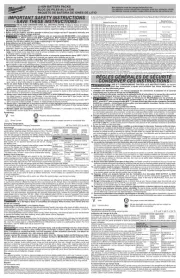
14 Augusti 2025

14 Augusti 2025
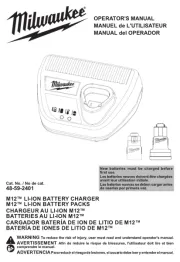
13 Augusti 2025
batteri Manualer
- Kenwood
- Worx
- ResMed
- Fluke
- True Blue Power
- Shure
- Daewoo
- Ergotron
- Gude
- Pawa
- Watson
- Growatt
- Black Decker
- Hyundai
- Nedis
Nyaste batteri Manualer
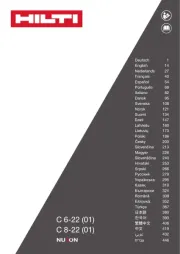
14 Oktober 2025
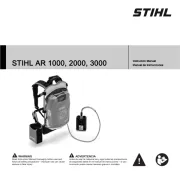
13 Oktober 2025

12 Oktober 2025

9 Oktober 2025
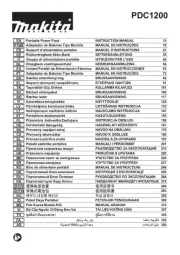
8 Oktober 2025

7 Oktober 2025

5 Oktober 2025
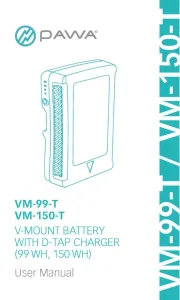
3 Oktober 2025
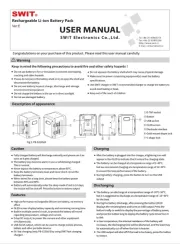
2 Oktober 2025

29 September 2025